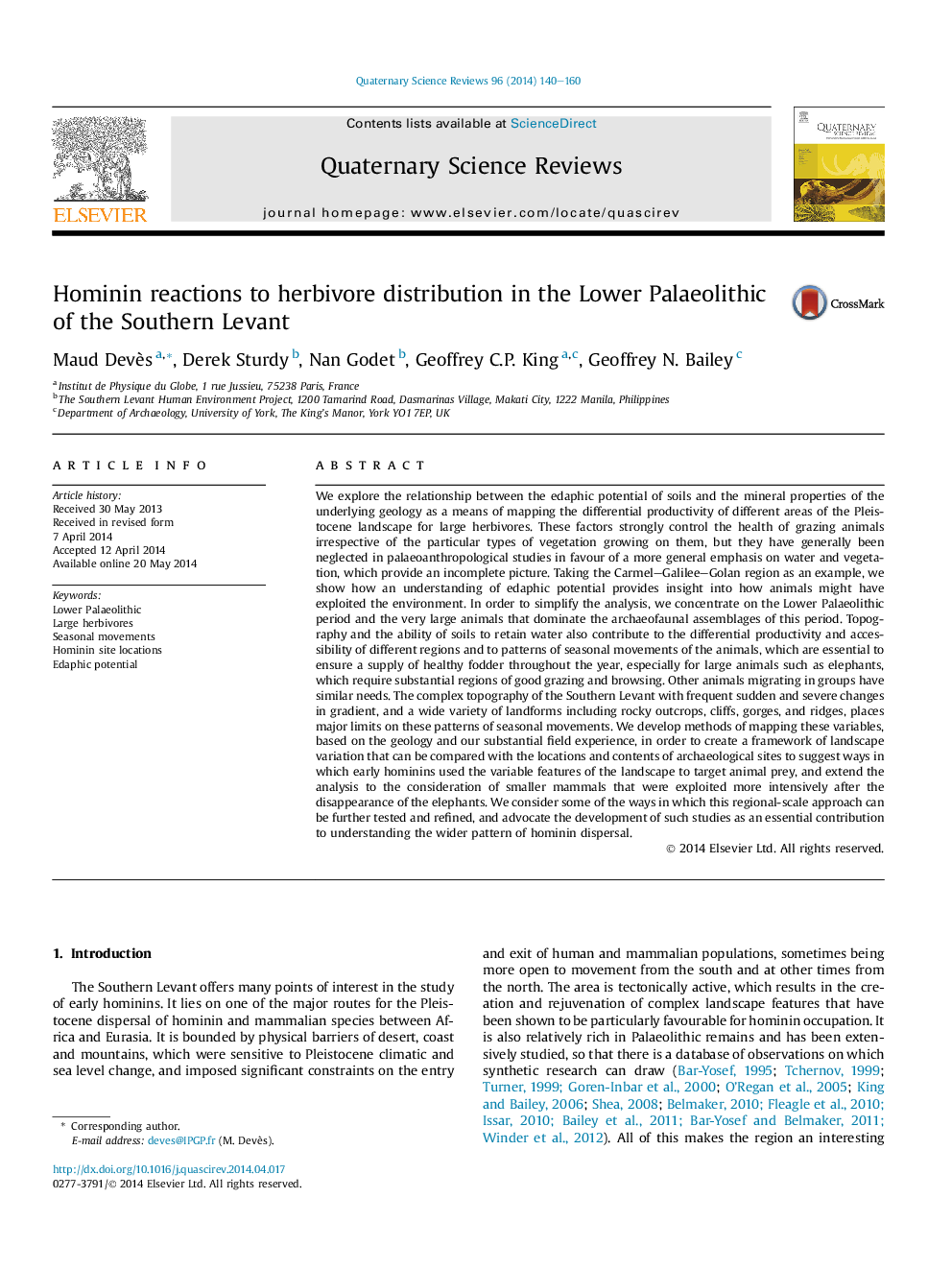| کد مقاله | کد نشریه | سال انتشار | مقاله انگلیسی | نسخه تمام متن |
|---|---|---|---|---|
| 4735383 | 1640838 | 2014 | 21 صفحه PDF | دانلود رایگان |
• Pleistocene landscape change in relation to hominid behaviour.
• Landscapes, herbivore distributions and archaeological sites.
• Edaphic potential of bedrock and soils a measure of herbivore spatial distribution.
• Exploits tectonic geomorphology to highlight constraints of landscape evolution.
• Offers new insights into the human significance of elephants and their extinction.
We explore the relationship between the edaphic potential of soils and the mineral properties of the underlying geology as a means of mapping the differential productivity of different areas of the Pleistocene landscape for large herbivores. These factors strongly control the health of grazing animals irrespective of the particular types of vegetation growing on them, but they have generally been neglected in palaeoanthropological studies in favour of a more general emphasis on water and vegetation, which provide an incomplete picture. Taking the Carmel–Galilee–Golan region as an example, we show how an understanding of edaphic potential provides insight into how animals might have exploited the environment. In order to simplify the analysis, we concentrate on the Lower Palaeolithic period and the very large animals that dominate the archaeofaunal assemblages of this period. Topography and the ability of soils to retain water also contribute to the differential productivity and accessibility of different regions and to patterns of seasonal movements of the animals, which are essential to ensure a supply of healthy fodder throughout the year, especially for large animals such as elephants, which require substantial regions of good grazing and browsing. Other animals migrating in groups have similar needs. The complex topography of the Southern Levant with frequent sudden and severe changes in gradient, and a wide variety of landforms including rocky outcrops, cliffs, gorges, and ridges, places major limits on these patterns of seasonal movements. We develop methods of mapping these variables, based on the geology and our substantial field experience, in order to create a framework of landscape variation that can be compared with the locations and contents of archaeological sites to suggest ways in which early hominins used the variable features of the landscape to target animal prey, and extend the analysis to the consideration of smaller mammals that were exploited more intensively after the disappearance of the elephants. We consider some of the ways in which this regional-scale approach can be further tested and refined, and advocate the development of such studies as an essential contribution to understanding the wider pattern of hominin dispersal.
Journal: Quaternary Science Reviews - Volume 96, 15 July 2014, Pages 140–160
